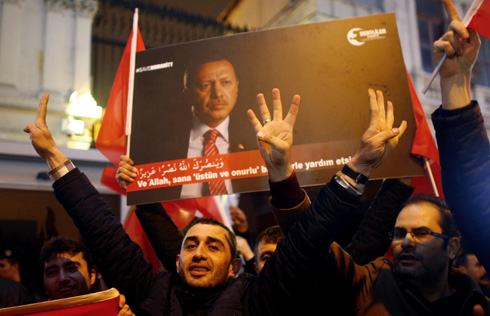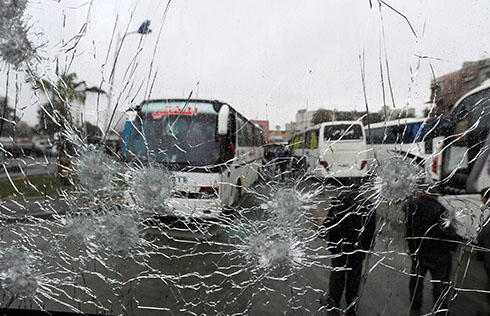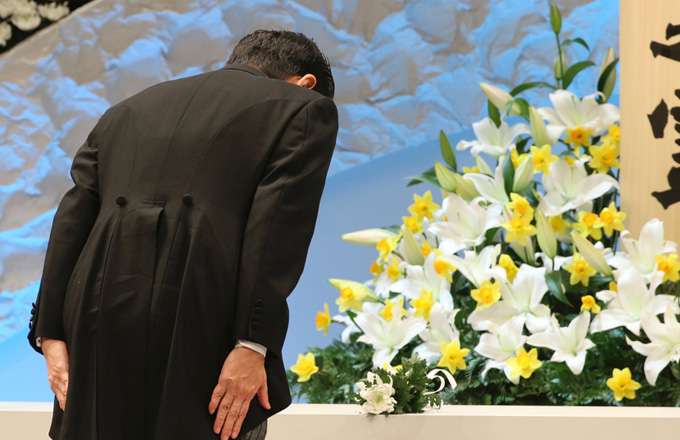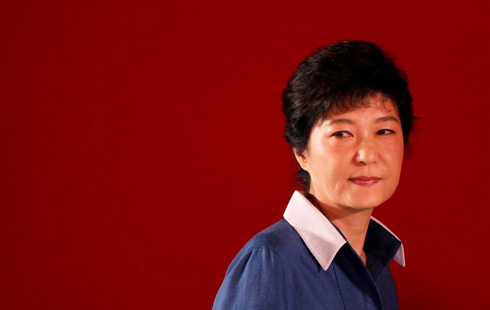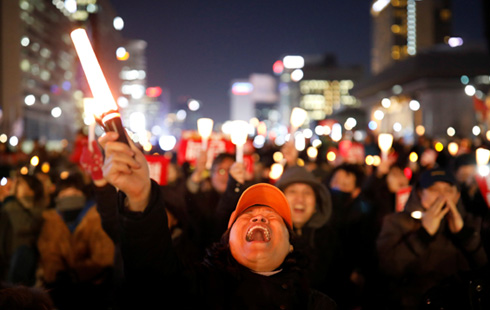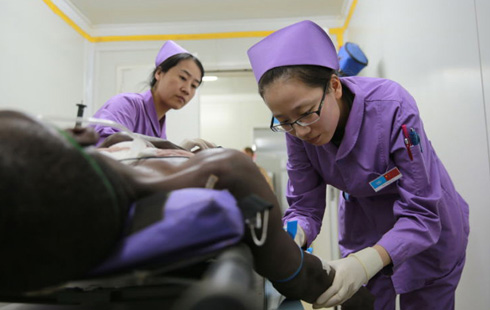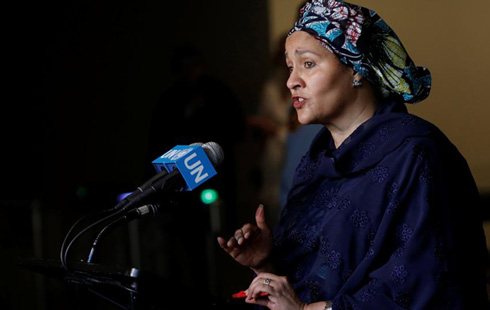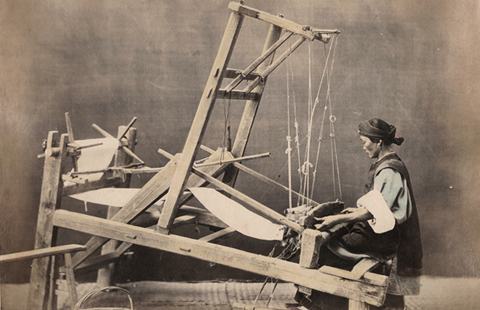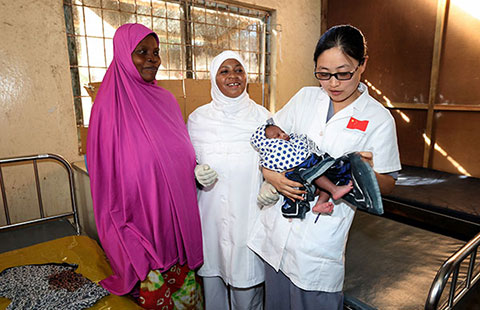Full Text of Human Rights Record of the United States in 2012
V. On the rights of women and children
The U.S. remains one of a few countries in the world that have not ratified the Convention on the Elimination of All Forms of Discrimination against Women or the Convention on the Rights of the Child. It faces prominent problems in protecting the rights of women and children.
Women face discrimination in employment and payment. Women made up about two-thirds of all workers in the U.S. who were paid minimum wage or less in 2011 and 61 percent of full-time minimum wage workers, according to the Bureau of Labor Statistics (www.womensenews.org, December 11, 2012). On average, women have to work as far as April 17 into 2012 to catch up with that men earned in 2011, meaning women earned 77 cents to the male dollar. African American women earn 62 cents to the male dollar, Latinas 54 cents. In some states, women of color earn less than half as their male counterparts. Women in Wyoming, the lowest ranking state, earn just 64 cents on the male dollar (www.womensenews.org, April 30, 2012). Voters in Oklahoma approved an amendment to the state's constitution to end affirmative action programs in state government that had been designed to increase the hiring of minorities and women in the state's 115 agencies (www.articles.chicagotribune.com, November 7, 2012). The problems that pregnant women and new mothers face on the job are very real. Employers routinely ignore mandate in the Pregnancy Discrimination Act, and are forcing pregnant women out of the workplace (www.edition.cnn.com, November 26, 2012). A Houston mother says she was fired from her job at a collection agency after asking to bring a breast pump into the office so she'd have plenty of fresh breast milk for her newborn. A new Connecticut mom says her new employer asked her to resign after she told them she was pregnant (www.latimes.com, February 8, 2012).
The poverty rate among women is higher than males. The National Women's Law Center (NWLC) announced that the poverty rate for women in 2011 was 14.6 percent, compared to men's 10.9 percent. Women are more likely to live in poverty and about 40 percent of women who head families live in poverty, according to the NWLC. Another report on the plight of female retirees also notes that the poverty rate among retired women is 50 percent higher than their male counterparts (womensenews.org, September 17, 2012).
Women are the victims of violence and sexual assaults. An average of three women in the U.S. lose their lives every day as a result of domestic violence (www.dccadv.org, October 1, 2012). A national census of domestic violence agencies in September 2011 found that more than 67,000 victims were served in a single day (www.womensenews.org, July 17, 2012). In 2010, the arrest rate for rape was 24 percent in the U.S. (www.thedailybeast.com, April 9, 2012). According to the Report on Violence against Women, its Causes and Consequences, submitted by the Special Rapporteur to the General Assembly in 2012, most prison staff in the U.S. is not adequately trained to prevent or respond to inmate sexual assaults, and prison rape often goes unreported and untreated (United Nations document number A/67/227).
Women in the U.S. forces are the victims of widespread sexual abuse, leading to media allegation that the US military has a culture of rape (www.aljazeera.com, August 4, 2012). Around 79 percent of women serving in the military reported experiences of sexual harassment. Military sexual trauma often leads to debilitating conditions such as Post Traumatic Stress Disorder (PTSD) and major depression (www.servicewomen.org). That Air Force drill instructor Luis Walker was accused of raping and sexually assaulting 10 female trainees is the biggest sex scandal to hit the U.S. military since the 1990s (www.reuters.com, July 21, 2012). In 2011, nearly 3,200 rapes and sexual assaults were officially reported, but the Pentagon admits that represents just 15 percent of all incidents. A military survey revealed that one in five women in the US forces has been sexually assaulted, but most do not report it. Nearly half said that they "did not want to cause trouble in their unit" (www.aljazeera.com, August 4, 2012).
The health of female minority groups is worrying. A media report in June 2012 said rate of HIV infection in heterosexual African American women in the poorest neighborhoods of Washington, D.C. nearly doubled the 6.3 percent infection rate two years before. Officials said 90 percent of all women with HIV in the city are black (www.washingtonpost.com, June 21, 2012). Sixty-six percent of the women newly infected with HIV each year are black, even though African-American women represent only 14 percent of the U.S. female population. The national age-adjusted death rate for black women in the U.S. is nearly 15 times higher than that observed for HIV-infected white women (www.newswise.com, March 7, 2012). Minority women in the U.S. are more likely to die during or soon after childbirth than white women, according to a report posted on the website of the Chicago Tribune on August 3, 2012. For every 100,000 babies born to white women, between seven and nine moms die from complications related to pregnancy. In comparison, 32 to 35 black women die for every 100,000 live babies. Deaths among Hispanic and Asian women - born in the U.S. and abroad - are closer to rates for white women at around 10 per 100,000.
Children in the U.S. are not blessed with enough protection for their personal safety and freedom. According to a report posted on the website of the Daily Telegraph on December 16, 2012, the slaughter of children by gunfire in the U.S. is 25 times the rate of the 20 next largest industrial countries in the world combined. The National Center for Missing and Exploited Children says at least 100,000 children across the country are trafficked each year (www.usatoday.com, September 27, 2012).
Child sexual abuse is a widespread public health problem. Research indicates that 20 percent of adult females and 5 to 15 percent adult males experienced sexual abuse in childhood or adolescence, according to a report posted on the website of www.preventchildabuse.org on November 5, 2012. In 2010, 63,527 children in the U.S. were victims of child sexual abuse. According to a report by the CNN on October 18, 2012, 1,247 "ineligible volunteer files" of the Boy Scout released that year identified more than 1,000 leaders and volunteers banned from Boy Scout after being accused of sexual or inappropriate conduct with boys from 1965 to 1985. Priests and leaders of the Boy Scouts had shielded abusers, according to the report. Former Pennsylvania State assistant football coach Jerry Sandusky was convicted of abusing 10 children over 15 years (www.usatoday.com, October 10, 2012). In 2012, several religious figures were found to have sexually assaulted children. In July 2012, Roman Catholic monsignor William Lynn was sentenced to six years in prison for allowing a priest suspected of sexual misconduct with a minor to have continued contact with children (the Wall Street Journal, July 24, 2012). In September, a Roman Catholic bishop in Kansas City was found guilty of failing to tell authorities about child pornography that was produced by a priest under his supervision (the Wall Street Journal, September 6, 2012).
The number of homeless children increases sharply in the U.S. and many children are stricken by poverty. For the first time in history, public schools reported more than one million homeless children and youth, according to data released by the U.S. Department of Education on June 27, 2012. This total does not include homeless children and youth who were not enrolled in public preschool programs and those identified by school officials. Forty-four states reported school year-to-year increases in the number of homeless students, with 15 states reporting increases of 20 percent or more. The number of homeless children enrolled in public schools has increased 57 percent since the 2006-2007 school year. In Michigan, the number of homeless children enrolled in public schools had increased 315 percent between 2008 and 2011 (www.nlchp.org, June 27, 2012). The number of children in New York city's shelters hit 19,000 by September 2012. Francheska Luciano, 14, said living in shelter was "like living in hell." (www.nydailynews.com, September 9, 2012) The U.S. Department of Education said in a report that only 52 percent of identified homeless students who took standardized tests were proficient in reading, and only 51 percent passed the math portion. Homeless students were also found to be more likely to drop out of school and less likely to graduate from high school than their classmates (www.neatoday.org, Nov. 28, 2012). According to "America's Children in Brief: Key National Indicators of Well-Being, 2012," 22 percent of the children aged 0 to 17, or 16.4 million kids, live in poverty in 2010 (www.csmonitor.com, July 17, 2012). Fourteen states saw increases in child poverty between 2010 and 2011 (usatoday.com, September 23, 2012). Nevada saw a 38 percent increase in child poverty over the past decade (www.csmonitor.com, August 17, 2011).






